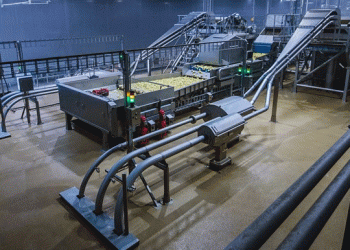@jorgeluisalonso
#Nitrogenmanagement #Potatotubersprouting #Postharvestbiology #Tuberdormancy #Sustainableagriculture #Seedpotatoquality
Potatoes are a crucial crop in the food industry, and preserving their quality during storage is vital. Potato tubers undergo a period of dormancy before sprouting after harvest, and it’s important to extend this dormancy while inhibiting sprouting as much as possible for commercial purposes. Nitrogen management is a promising approach to regulate tuber dormancy naturally and sustainably. In a study by the Key Laboratory of Potato Biology and Biotechnology in China, researchers found that lower nitrogen application rates resulted in longer dormancy, while higher rates increased sprouting and yield. This article discusses the impacts of nitrogen management on potato tuberization, highlighting the significance of managing nitrogen for potato growers to improve selling seasons, reduce economic losses, and improve seed potato quality.
Nitrogen application rate has a significant effect on potato tuber dormancy and emergence. Lower nitrogen application rates can extend dormancy in commercial potato varieties. Higher nitrogen application rates can result in more sprouting eyes and stem and higher yields after planting. Nitrogen application affects tuber formation and is associated with changes in sucrose and GA content. Reducing the nitrogen application rate can extend the marketing period and reduce the risk of alkaloid formation from sprouting.
The study suggests that nitrogen management is a viable practice to regulate potato tuber dormancy, with practical implications for nutrient management in potato growing, post-harvest storage and breeding. Nitrogen management is a strategy to understand the physiological mechanisms involved in potato tuberization. By regulating dormancy release through carbohydrate- and phytohormone-mediated mechanisms, nitrogen application can be used to promote dormancy release when needed.
Controlling nitrogen plays a critical role in influencing postharvest dormancy, sprouting, and tuber quality. Potato growers can manage nitrogen to extend dormancy, improve seed potato quality, and reduce economic losses. However, excessive nitrogen application can disrupt tuber dormancy, leading to potential environmental pollution. Therefore, developing effective and sustainable methods for potato production through nitrogen management is essential.





![Staff members sort out potatoes at a potato cultivation center in Xiji county, Northwest China's Ningxia Hui autonomous region, March 2, 2023. [Photo/Xinhua]](https://potatoes.news/wp-content/uploads/2023/05/6454cd7ca310b60580cc63fd-120x86.jpeg)


